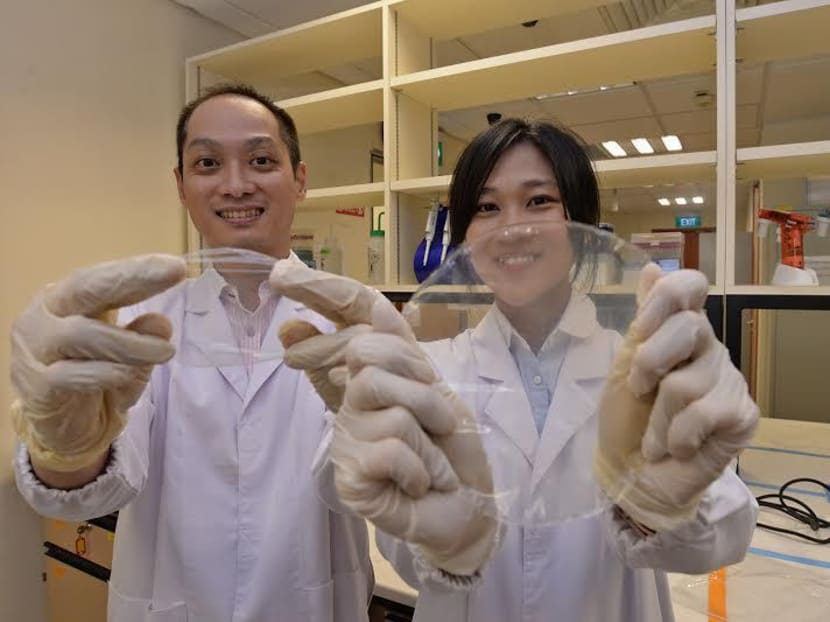Longer shelf-life for food thanks to breakthrough in packaging tech
SINGAPORE — Food products that last longer in their packaging, with little, or no chemical preservatives needed — that is the promise of a breakthrough in packaging technology made by two National University of Singapore researchers.

Assoc Prof Thian Eng Han (left) and PhD student Ms Tan Yi Min have developed eco-friendly food packaging material. In this photo, they are holding up the chitosan-based GFSE composite film. Photo: Robin Choo
SINGAPORE — Food products that last longer in their packaging, with little, or no chemical preservatives needed — that is the promise of a breakthrough in packaging technology made by two National University of Singapore researchers.
Associate Professor Thian Eng San from the Department of Mechanical Engineering and Ms Tan Yi Min, a PhD student, have developed an environment-friendly food packaging material that slows down fungal and microbial growth, and is free of chemical additives.
The researchers took a naturally microbial-resistant and biodegradable composite film based on chitosan — a renewable material derived from crustaceans’ exoskeletons — and combined it with grapefruit seed extract to enhance its antimicrobial and antifungal properties.
Bread samples packaged with this composite film was found to last more than three times longer, compared with those in conventional synthetic packaging film, where visible mould appeared after three days.
With the composite film, mould growth started on the 10th day.
With this new material, there is no need to use silver ions to give it anti-microbial properties — as is the current practice on packaging films — since there is a small possibility of the silver leeching into the food, which can be harmful if accumulated in large amounts in the body.
Food manufacturers will also be able to cut back on chemical preservatives when using the composite film.
More studies will be done using the film with other products such as meat, seafood and dairy. If proven commercially viable, Assoc Prof Thian hopes the material will be used in three to five years.
Ms Tan sees the wider benefit: “(In) being able to extend the food products’ shelf life, we can minimise food wastage, (leading) to an increase in cost savings and protection for our environment.”
In 2014 alone, Singapore generated 788,600 tonnes of food waste, the equivalent of about two bowls of rice per person a day, contributing to more than 10 per cent of total waste. Plastic waste, including food packaging, rose to a high of 869,000 tonnes.
The National Environment Agency estimated that the recently expanded Semakau landfill would be filled by 2035.









